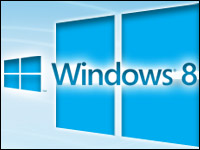
To say that Microsoft has a lot riding on its imminent Windows 8 launch is to have a magnificentgrasp of the obvious. By now, most of us have heard the reports that Microsoft will spend a whopping US$1.5 to $1.8billion in an all-out Windows 8 and Windows 8 RT Surface tablet marketing blitz. Microsoftdeclined to confirm the figure, saying it never comments on such matters. Just this week, however, thecompany did release two pertinent numbers: $39.99 and $499; that is the introductory list priceof Windows 8 and the retail price of the Windows 8 Surface Tablet, respectively.
Both are designed to spur sales of the new Windows 8 OS and to emphasize that Microsoftintends to be price-competitive with rivals Apple and Google, which are already established inthe tablet space. The $39.99 introductory price for a download copy of Windows 8 will be goodthrough Jan. 31, 2013. That is the least expensive Windows OS tag in Microsoft’s history.Likewise, the $499 retail cost of the Windows 8 RT Surface Tablet puts in right in line withApple’s iPad.
Will these moves be enough to create demand and convince users to buy the products? To put it bluntly, the biggest issue with Windows 8 is not the much-maligned touch interface(originally “Metro”); it’s that a 60 percent majority of corporations say they have “no compellingbusiness need” to migrate to the latest Microsoft desktop OS or the Windows 8 RT SurfaceTablet set to debut later this week.
Those are the findings of the latest independent ITIC Windows 8 Deployment and UsageTrends Survey, which polled over 500 organizations during September. The Web-based survey found that only 10 percent of respondents — or one in10 companies — had definitive plans to migrate to Windows 8 once it’s released on October 26. That’s in starkcontrast to the 64 percent of the respondents to ITIC’s Windows 7 poll, who stated their intentions tomigrate to Windows 7 shortly after Microsoft released it in the fall of 2009.
Similarly, only 9 percent of those in the latest poll planned to purchase a Windows 8 Surface tablet,compared to 49 percent who said they would not buy the forthcoming Windows 8 Surface Tablet.
Windows 7 is a big factor in these decisions. Organizations cited their satisfaction with existingWindows 7 desktops or the fact that they were just commencing a Windows 7 upgrade as themain reasons for not migrating to Windows 8. The failure of Windows 7’s predecessor Vista, andthe decision by many organizations to remain on Windows XP, created a huge swell of pent-updemand for Windows 7.
The reasons given for relatively slow momentum for Microsoft’s new Windows 8 RT Surfacetablet vary somewhat from the perceived customer inertia involving the Windows 8 desktopOS, but some points are common to both. When asked to check off all of thereasons that would prevent them from buying either the traditional Windows 8 OS or the newWindows 8 RT Surface tablet, survey participants cited “no compelling business need” as theNo. 1 reason.
Some 61 percent of respondents said there was no compelling business need, followed by 49 percentwho indicated their Windows 7 desktops were sufficient; 39 percent said they wanted to wait to ensurecompatibility with existing and legacy applications, and 22 percent — or approximately one in fiverespondents — said they were unhappy with the Windows 8 Touch interface.
Out of Touch but Not Untouchable
Microsoft’s touch interface has been a hot topic for the last year. Most of the commentary bythe press and analysts has been negative. However, a more detailed examination of the ITICWindows 8 survey suggests that corporations are not opposed to the touch interface per se.
Tellingly, 36 percent of survey participants had “no opinion” of the Metro touch interface; 25 percent saidthey didn’t like it; 15 percent said they would wait to use it and judge for themselves; 4 percent saidthey hadn’t used it but were concerned by the bad reviews; 7 percent said touchscreen GUIswere the future for corporate desktops and users would have to adjust; another 7 percent saidthey were unconcerned and that the issue had been overblown by the press; and the remaining 6percent said they liked the Windows 8 touchscreen interface and were excited about using it.
Information gleaned from anecdotal user comments and first-person customer interviews reveals that most of theopposition to the Windows 8 touchscreen interface stems from the fact that Microsoft does notprovide users with an easy mechanism to utilize the traditional Windows Start button interface.Corporate IT managers argue that forcing businesses to adopt the touch interface is too jarringfor most of their end users.
The comment of an IT manager at a mid-sized healthcare facility typified the overarchinguser sentiment. “Our concern with Windows 8 client desktop is its dramatic departure fromWindows 7/Vista/XP styling,” he noted. “For the average client, [the MetroGUI] represents a steep learning curve, and we expect negative reactions from clients on havingto ‘learn’ something new ‘again.’ Our clients are very satisfied with Windows 7 and won’t see abenefit to the major GUI change.”
The VP of IT at a consulting firm that has used both the Windows 8 beta and the Windows8 RT Surface tablet and plans to migrate in the next six-to-nine months had high praise forthe performance.
“Microsoft has consistently improved key Windows features, performance,reliability and security. Technical service, support & documentation are excellent,” he said.
However, he agreed with other respondents that Microsoft messed up the timing and marketingfor Windows 8 and “over-emphasized” the touch interface.
“There should be an easy, simpleway and a choice to use the traditional Start button. Metro touch screen is the future, but mostcorporate users are still very much mired in the present and will be for the next couple of years.”
Companies Take a Wait-and-See Attitude
The mood is more cautious with respect to the Windows 8 RT Surface tablet. Overall, surveyrespondents are taking a wait-and-see attitude. Just over one-third — 34 percent — said their Windows7 desktops were fine; another 24 percent indicated they were already using the Apple iPad and weresatisfied with its performance; 18 percent said other device purchases would take priority, and 16 percent said theywere waiting to see how the Windows 8 Surface Tablet would be priced.
Not surprisingly, only 9percent of survey participants said the touch interface factored into their decision not to purchasethe Windows 8 Surface tablet, since touch is standard for tablets and smartphones.
Among the other Windows 8 survey highlights:
- Although 10 percent of participants affirmed their Windows 8 migration plans and 49 percentof survey participants said they would not migrate to Windows 8, the remaining 41 percentwere undecided. One quarter — 25 percent — said they were “studying the issue,” while 17 percentwere “unsure.”
- A 58 percent majority of corporate respondents had not yet tried the Windows 8 desktop OSbeta. Of the 42 percent that had tested it, a 32 percent majority gave the new client OS positiveratings for performance, reliability and features. The remaining 10 percent of early beta users/adopters gave it a negative rating — almost overwhelmingly due to difficulty with the touch interface. Those users complained that it made it difficult to use and access Windows-based applications.
- On a more positive note, only 3 percent of corporate survey participants said they wereconsidering switching from Microsoft Windows to another desktop OS.
- Although PC sales have been sluggish, an overwhelming 89 percent majority of surveyparticipants said their firms had no plans to abandon the PC platform entirely within thenext five years.
Analysis of the Results
Microsoft’s Windows 8 appears to be a solid successor to Windows 7 in terms of performance,reliability, scalability and security. Additionally, Microsoft appears to be fulfilling its pledge notto repeat the egregious mistake it made with Vista, which sorely lacked backwards compatibilityand interoperability with many crucial third-party applications. Nonetheless, even someMicrosoft insiders privately acknowledge that the company would have been better served byholding off on shipping the Windows 8 desktop since a significant portion of businesses have just recently migrated to Windows 7.
Microsoft has largely been mum on the issue of what users perceive as unnecessarily forcingthem to use the touch interface. Touchscreens have long been a staple among smartphone andtablet users, including Apple iPhone and iPad customers. But the new Microsoft touchscreen isand will be a jarring change for many corporate end users — particularly older ones. Overall, it appears Microsoft badly miscalculated this issue.
The Windows 8 RT Surface tablet is another story. In the tablet and smartphone arenas,corporations and consumers expect to use — and in fact, embrace — the touchscreen interface. In thetablet arena, Microsoft faces two significant challenges to adoption: Their names are “iPad” and”Android.” Microsoft is late to the tablet market, where the Apple iPad has a commanding 68 percentmarket share.
Microsoft Gets Aggressive
Microsoft has heard the catcalls from users on Windows pricing and it’s also noted Apple’sexpanding and encroaching enterprise presence. Hence, the decision to price the single userretail upgrade from Windows XP, Windows Vista and Windows 7 to Windows 8 Professionalat a mere $39.99. This price is for a download only; customers who want a boxed version thatincludes physical media from retailers like Office Depot and Staples will pay $69.99 for theintroductory offering. That is the least expensive price for a Windows upgrade in Microsoft’shistory.
Until now, Microsoft Windows upgrades have typically retailed for $100 to $200.Microsoft volume-license business customers who have Open and Enterprise agreements receiveeverything from free upgrades to steep discounts off list, ranging from 18 percent to 40 percent on average.Enterprises that purchase thousands of Windows licenses can get even higher discounts.
Microsoft will also ship a Windows 8 “Pro Pack” that will retail for $69.99, which includes nophysical media. This upgrade will enable users to migrate standard Windows 8 softwareto the Professional edition and will also add Media Center capabilities, such as DVD playback,that are not incorporated by default in Windows 8.
Bits and pieces of Microsoft’s marketing campaign have begun to leak out. The initial adsappear to indicate that Microsoft will concentrate on highlighting Windows 8 and Surface tabletfeatures and functions. However, it must do more than just enumerate the products featuresand capabilities — as powerful as they may be. Microsoft must also emphasize to current andprospective customers the myriad technical and business differentiators between Windows 8, theSurface tablet and rival devices.
Topping the list: the breadth and depth of Microsoft’s technical service and support, along withstrong security. Yes, security. Throughout the 1990s and into the new millennium, Microsoftproducts and reputation took a well-deserved beating for lax security. That changed whenMicrosoft launched the Trustworthy Security Initiative in January 2002. Since then, Microsofthas initiated a policy of “secure by design, secure by default and secure in deployment,” whichhas yielded tangible results.
Microsoft software, including Windows desktops, Windows Server,SQL Server and other applications, is among the most secure in the industry. Additionally,Microsoft is quick to respond with security patches, fixes and documentation when issues doarise. This attention to inherent security and fast remediation is something that Google and Appleare attempting to emulate.
Conclusions and Recommendations
It is highly unlikely that Windows 8 will see widespread mainstream corporate adoption withinthe first year of its release. Microsoft should re-engineer Windows 8 within the first Service Packto enable corporations and consumers to easily revert to the traditional Start button and bypassthe touch interface. This would mitigate much of the negativity and help to assuage the corporateconcerns regarding the new OS.
Microsoft should also ensure that its Windows 8 documentationand technical service and support are topnotch and feature backwards compatibility with its ownproducts as well as the major third-party ISVs. Highlighting its partnerships with leading OEMhardware vendors like Asus, Dell, HP, Samsung and Sony could also help it sparksales. Microsoft can’t afford another debacle like Vista.
Microsoft is playing catch-up in the tablet arena. It must aggressively market the Windows8 RT Surface Tablet to consumers and create buzz. It is also imperative that Microsoftundercut Apple and Android-based rivals on pricing in order to gain a foothold in this intenselycompetitive market.


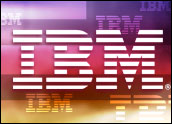
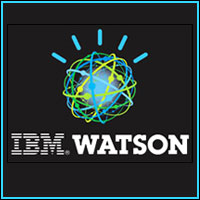
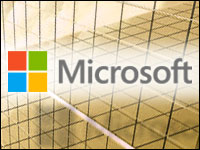
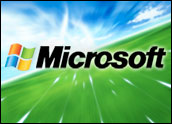
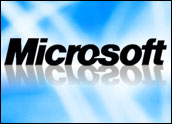

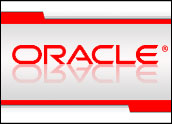
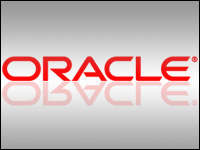


































Social Media
See all Social Media